Who Was Eleanor of Aquitaine? Queen, Mother, Strategist
Born in an age when men ruled, Eleanor of Aquitaine was an accomplished leader in her own right.
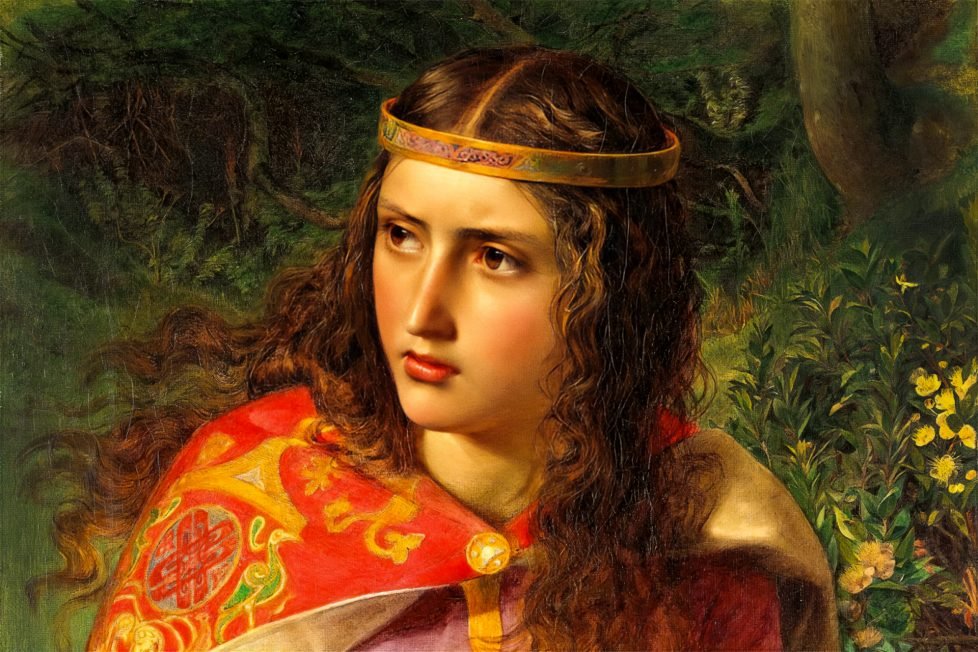
Born in an age when men ruled, Eleanor of Aquitaine was an accomplished leader in her own right.

Table of Contents
ToggleDuchess of Aquitaine in her own right, and queen of first France and then England by marriage, Eleanor has long been considered one of the most fascinating women in the medieval world. Over the span of 82 years, she experienced dizzying triumphs and considerable hardship, but ended her life as a powerful and influential political force. While she was seen by many at the time as conniving and ruthless, a re-examination of her life shows a woman who was not willing to live her life by the rules set down by men.

Eleanor was born into one of the most powerful and richest families in Europe, in one of the most cultured courts on the continent. The eldest daughter of Duke William X of Aquitaine, she became his heir at an early age, after the death of her only brother and mother in 1130.
Eleanor and her younger sister Petronilla were raised in the court of Duke William IX, their grandfather. Duke William was not just a patron of the arts, but a notable poet himself, and one of the first to use the vernacular language of his land, called Occitan or Provencal. His court at Poitiers was the birthplace of the courtly romance, a literary tradition noted for the tales of Arthur’s Camelot.
Eleanor was an educated woman for her time. She learned Latin and Provencal, and would have been thoroughly steeped in the atmosphere of the Court of Love established by her grandfather and encouraged by her father. She also became proficient at riding horses, hawking, and hunting, sports that were not commonly practiced by women in the early Middle Ages.
When her father William X died in 1137, Eleanor was the most eligible woman in Europe. Young, beautiful, and the heiress to the rich duchy of Aquitaine, it was only a question of which ruling family would snatch up this valuable prize. Before his death, William reached out to King Louis VI of France, who was himself on his deathbed. The French king quickly sent his own son Louis to marry Eleanor, thus securing the rich lands of Aquitaine for the French crown. The couple were married on July 25, 1137, shortly before the young prince became Louis VII after the death of his father on August 1. Eleanor returned to Paris with her new husband.
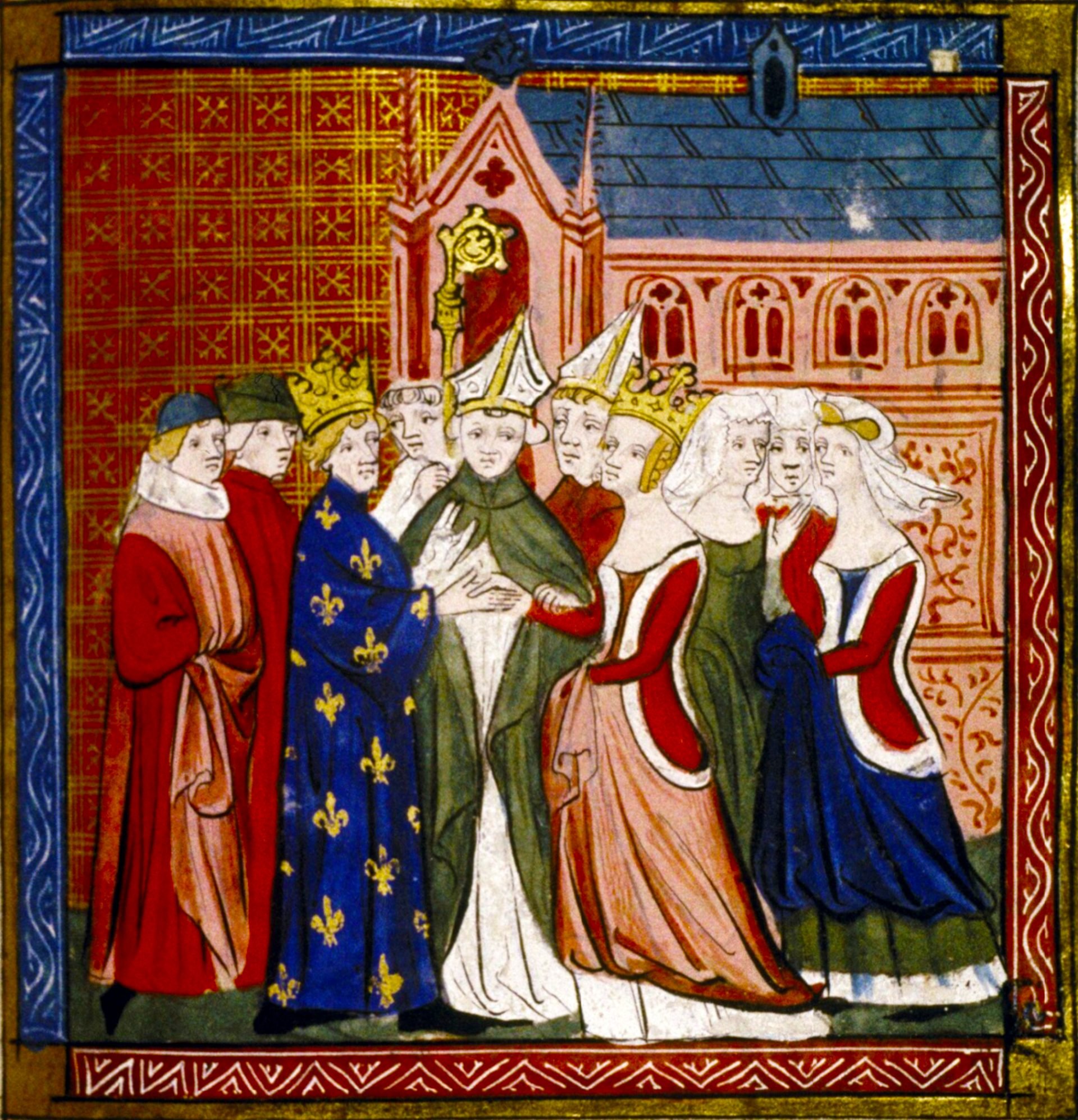
Paris now has a reputation for sophistication and luxury, but that was not the city that Eleanor arrived in back in 1137. This cold and drafty place lacked the warmth and culture of her home in the south. The story is that in an effort to improve living conditions, Eleanor pioneered the construction of built-in fireplaces that vented out smoke when she supervised the renovation of her husband’s palace.
Eleanor was not any more pleased with Louis than with Paris. The two were not very compatible, and there was not even the birth of a male heir to make the marriage more successful. In fact, it was eight years before their first child, Princess Marie, was born. Things were not going well when Bernard of Clairvaux called for a new Crusade in the Middle East. Not only Louis but also Eleanor answered the call in 1147, with her leading her own troops from Aquitaine as their feudal leader. Leaving her young daughter in France, she rode with Louis, scandalizing all and sundry with her daring uniform modeled on those worn by the male Crusaders.
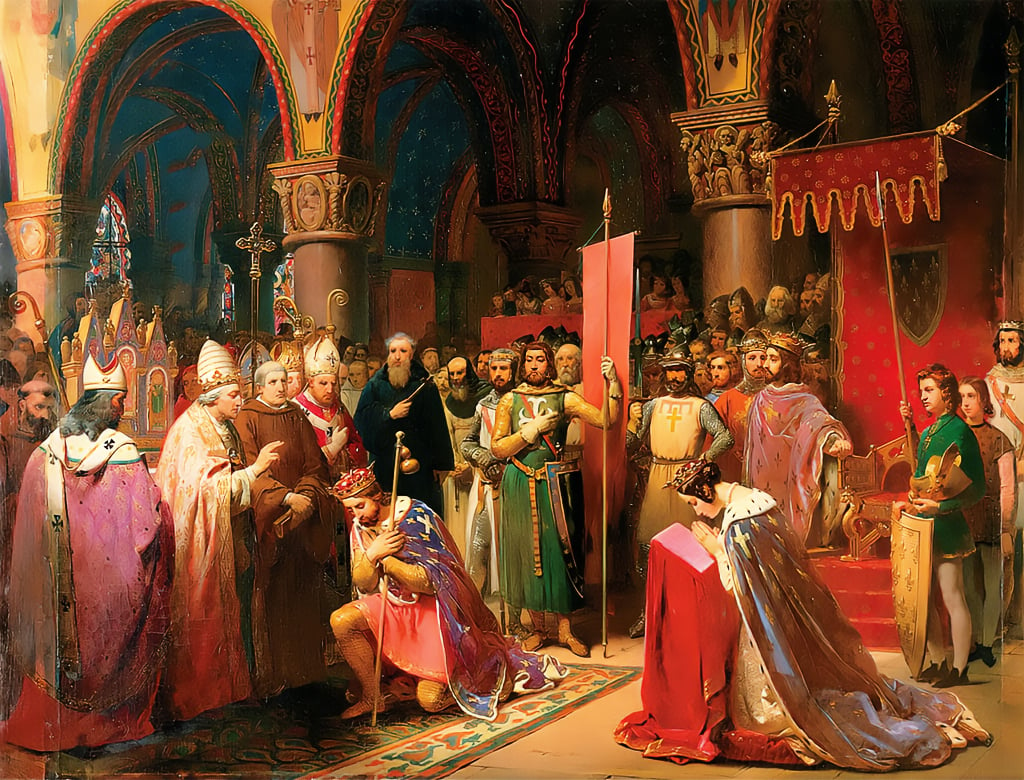
The marriage did not improve when they arrived in the Holy Land. Eleanor showed far too much interest in her uncle Raymond, Prince of Antioch, and eventually Louis lost his patience and forced her to accompany him to Jerusalem. When they returned to Europe in 1149 they sailed on separate ships. They did not sail directly to France, but stopped enroute to request an annulment from Pope Eugene III. The pontiff refused their request, and a second daughter was born after an attempted reconciliation. Without a male heir and both deeply unhappy in the marriage, they appealed again to the Pope, and this time he agreed to the annulment. In March 1152 the marriage was dissolved. Louis got custody of the girls, and Eleanor got Aquitaine.
Eight weeks later, Eleanor married Henry Plantagenet, the Duke of Normandy. She had met him at Louis’ court and although he was 12 years her junior, they were mutually attracted to each other. It wasn’t just a physical or romantic attraction. Eleanor held some of the richest lands in Europe, and without a husband to protect her she was liable to be kidnapped and forced into an unwanted marriage. Henry was a powerful duke and in contention for the throne of England, so he was a worthy match for the Duchess of Aquitaine.
Eleanor played her part in securing the crown for Henry. In 1153 she provided a fleet of 36 ships for Henry to use in his invasion of England to pursue his claim to the throne. The Treaty of Wallingford was signed on December 25, promising Henry that he would be king following King Stephen’s death, which occurred less than a year later. On December 19, 1154, Eleanor was crowned Queen of England by King Henry’s side. She bore Henry five sons and three daughters over the course of their tumultuous marriage.
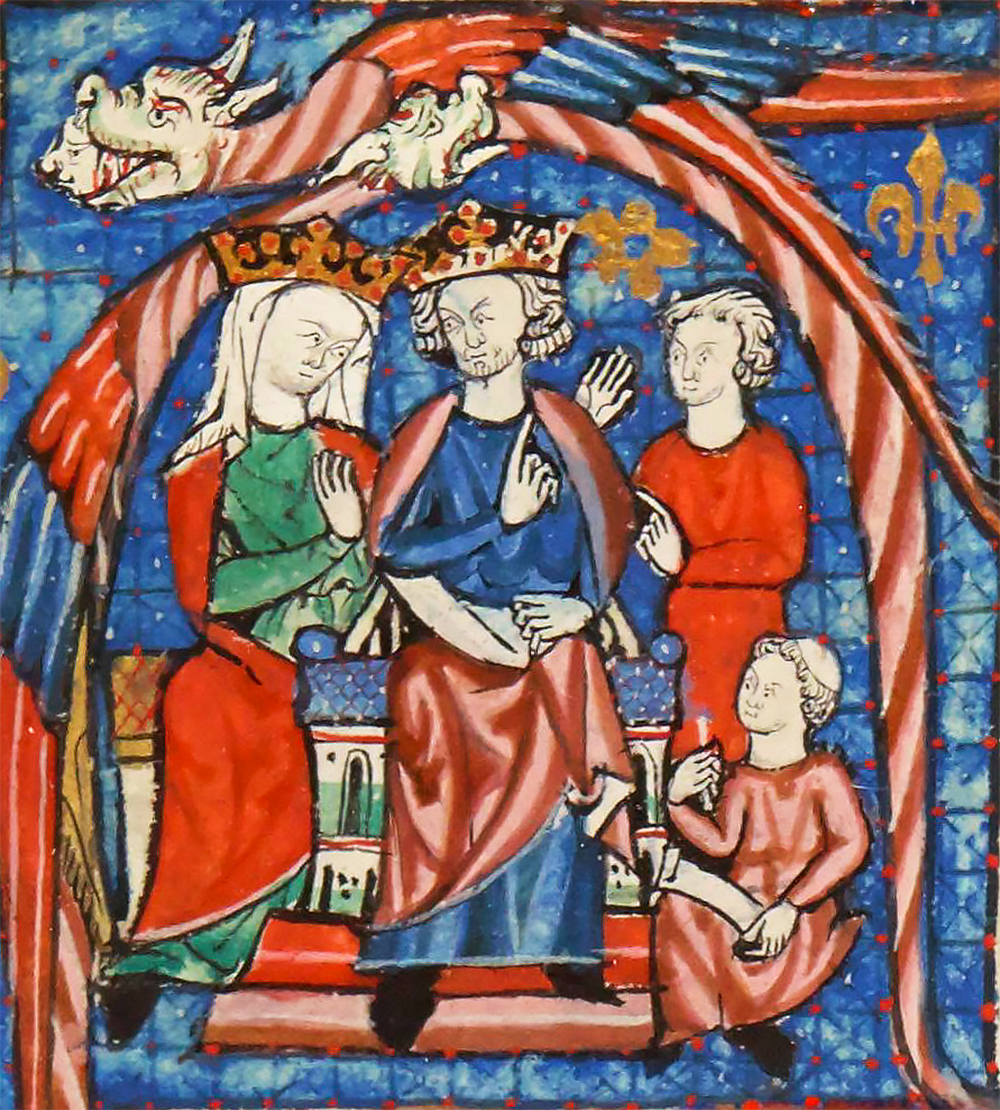
Eleanor’s marriage to Henry was hardly ideal. Her husband showed no inclination to be faithful to his wife, and everyone knew about his mistresses, and the children that resulted from those relationships. However, that was the common lot of many a medieval wife, and she would soon have learned to accept it. In fact, she raised several of Henry’s illegitimate children with her own in the royal nursery.
Eleanor was not content to simply play the role of wife and mother, taking a keen interest in the government of not just Aquitaine, but England as well. Henry left her as regent when he left the realm, and she showed her abilities as an administrator, presiding over courts as well as taking on other responsibilities. Henry did not trust her to act alone, appointing officials to oversee her, which must have been frustrating for this highly capable woman.
By 1168, Eleanor had had enough of Henry’s many flagrant adulteries. Starting around 1165, he became deeply enamored of Rosamund Clifford, the daughter of one of his barons, and that relationship appears to have been the last straw for the queen. After her daughter Matilda’s marriage to Henry, Count of Saxony, she packed up and left England for Aquitaine, where she settled down to rule as Duchess in Poitiers, and re-established the culture of courtly love from her father and grandfather’s time. Her sons Geoffrey and Richard accompanied her there, and her daughter from her first marriage, Princess Marie of France, may have joined her.
For five years Eleanor held sway as the independent Duchess of Aquitaine, before being pulled back into a roiling family feud. Henry had crowned their eldest son, also called Henry, as king in 1170 to ensure his succession, but by 1173 the young king wanted to overthrow his father and rule by himself. He, along with Richard and Geoffrey, rose up in open revolt against Henry II, and Eleanor sided with her sons. The revolt failed, and Eleanor was captured by Henry’s forces. The next year she was taken back to England and imprisoned for the next 16 years.
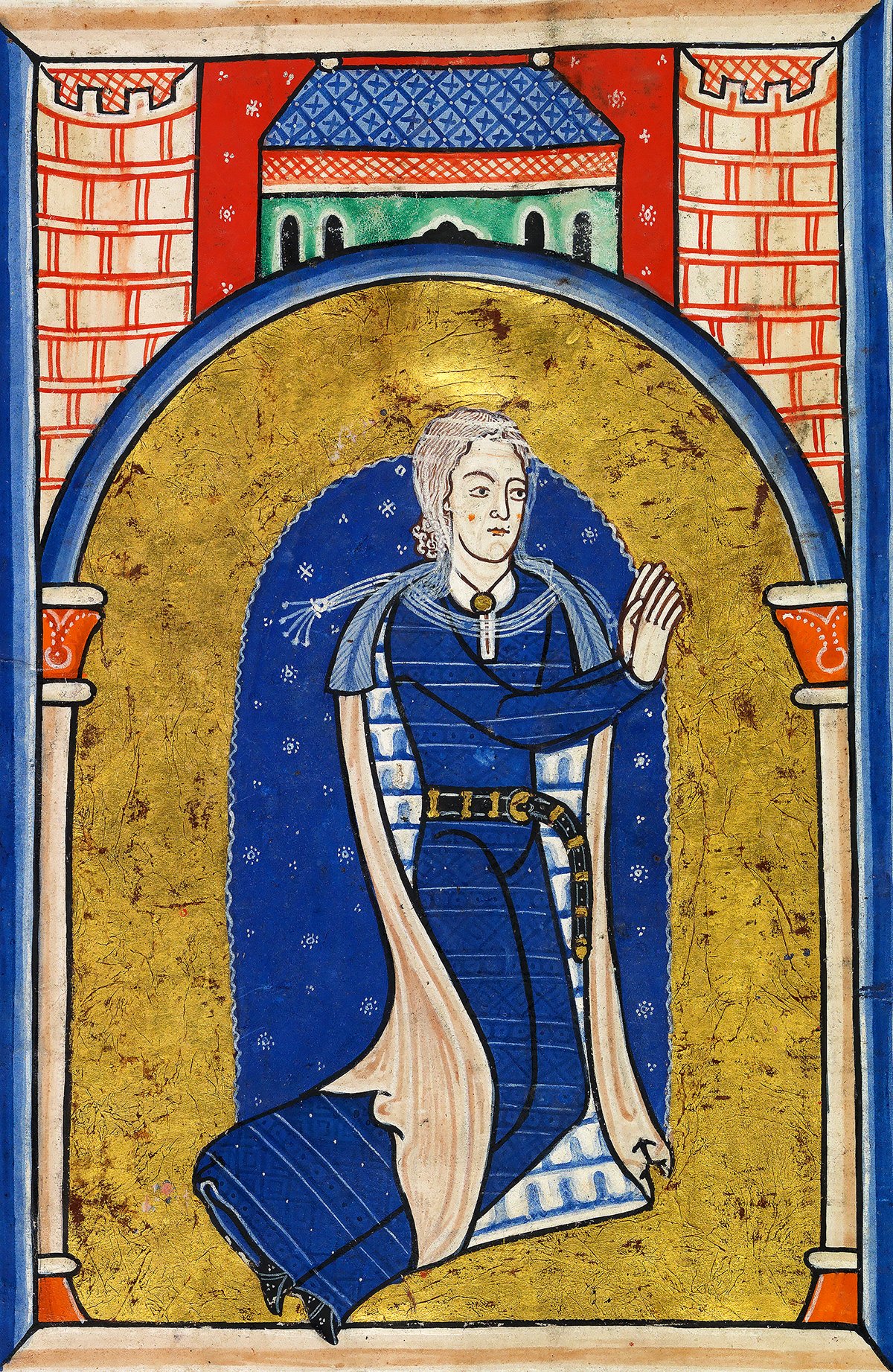
She was treated well. Sometimes she would be escorted to the royal court for occasions such as Christmas, and following the death of Henry the young king in 1183, she regained some freedom of movement, although she was still under guard at all times. It was not until Henry II died in 1189 that she was released.
In 1189, Eleanor was 67 years old, and could be assumed to be ready to settle into a quiet old age. However, the next chapter of her life was certainly not retirement. Richard inherited the crown upon his father’s death, becoming King Richard I, also known as Richard the Lionheart. He immediately freed Eleanor, appointing her his regent while he fought in the Crusades.
Richard had always been Eleanor’s favorite son, and she turned her efforts to finding him a suitable wife. Richard had been betrothed to Princess Alys, a daughter of Louis VII by his second wife, but for many years Alys had been Henry’s mistress, and neither Eleanor nor Richard wanted that marriage to proceed. Instead, Richard chose Berengaria of Navarre. Eleanor was almost 70 at that point, but she rode down across the Pyrenees to bring Berengaria to Richard. From there they made a long overland trek to Italy, where they spent the winter at Brindisi while Richard argued with Philip of France over the dissolution of his betrothal to Alys. Finally, Eleanor left Berengaria with her daughter Joanna and undertook the journey back to England, where she continued to act as regent in his absence.
Eleanor was an effective administrator, but her biggest test came in 1192 after Richard was captured by Henry VI, the Holy Roman Emperor, while on his way back from the Crusades. Henry demanded a ransom of 150,000 marks, and Eleanor emptied the treasury and imposed new taxes to raise the necessary funds. Meanwhile, both Philip of France and Eleanor’s youngest son John offered Henry large sums to keep Richard prisoner. Philip wanted the chance to seize lands held by the English in France, while John had set his sights upon the throne of his brother. Eleanor prevented the two plotters from meeting in person by forbidding John from leaving England.
Eleanor, now 72, accompanied the ransom, converted to 35 tons of silver, when it was taken to Mentz in early 1194 and exchanged for King Richard’s freedom. Mother and son quickly sailed to Antwerp, and from there to England. One of Eleanor’s first actions was to plead with Richard to forgive his brother John for his treachery, which the king did. Within a couple of months of their arrival, both Richard and Eleanor left England for the last time, on May 12, 1194.
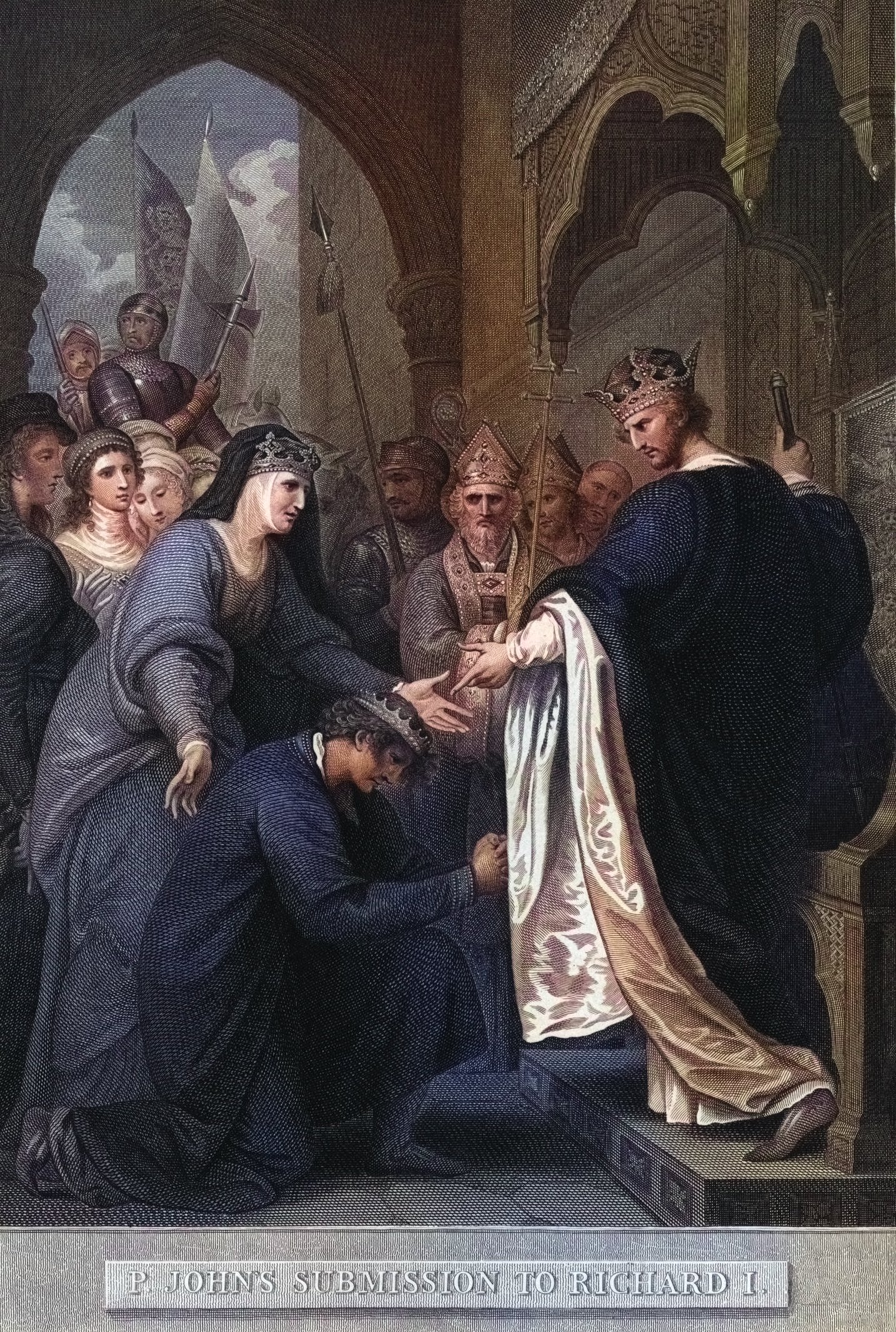
At this time, Eleanor took up residence at the abbey of Fontevrault, but she did not settle into a simple life of pious contemplation. From this retreat she was able to keep a close eye on the administration of Aquitaine. And in 1199, after the death of Richard, she once again found herself at the center of tumultuous events.
According to the laws of primogeniture, Richard, who had no children, should have been succeeded by his nephew Arthur, the son of Geoffrey. However, Arthur was barely in his teens, and had been raised in Brittany by his mother Constance, who hated Eleanor and all of her late husband’s family. Eleanor agreed with the other English leaders that John, with all his faults, would be a better choice.
Arthur and his mother attempted to seize Normandy, but Eleanor led a force of mercenaries to defeat them, and Arthur was placed in the custody of Phillip of France. Eleanor then negotiated with Phillip to marry his son Louis to her granddaughter Blanche of Castile. Then, at the age of 78, she rode down into Spain once more to escort the young princess back to Paris early in 1200.
Two years later, Arthur, who had escaped from the French, invaded Poitou to capture his grandmother. Eleanor had recently turned 80, but she still led the defense against Arthur’s forces at Mirabeau, holding out until John arrived to lift the siege. John took Arthur prisoner, but Eleanor made him swear not to kill his nephew. John promised, but Arthur disappeared into one of John’s dungeons and was never seen again.
Finally, in 1204, Eleanor died at the age of 82, and was interred at Fontevrault between Henry and Richard.
From an early age, Eleanor had been raised to rule, and she demonstrated again and again throughout her life that she was more than capable of taking on a leadership position, whether in England or in her home in Aquitaine. French Historians especially have tended to dismiss her as frivolous and vain, but an examination of her achievements in old age shows a skilled politician with the energy of a much younger woman.

